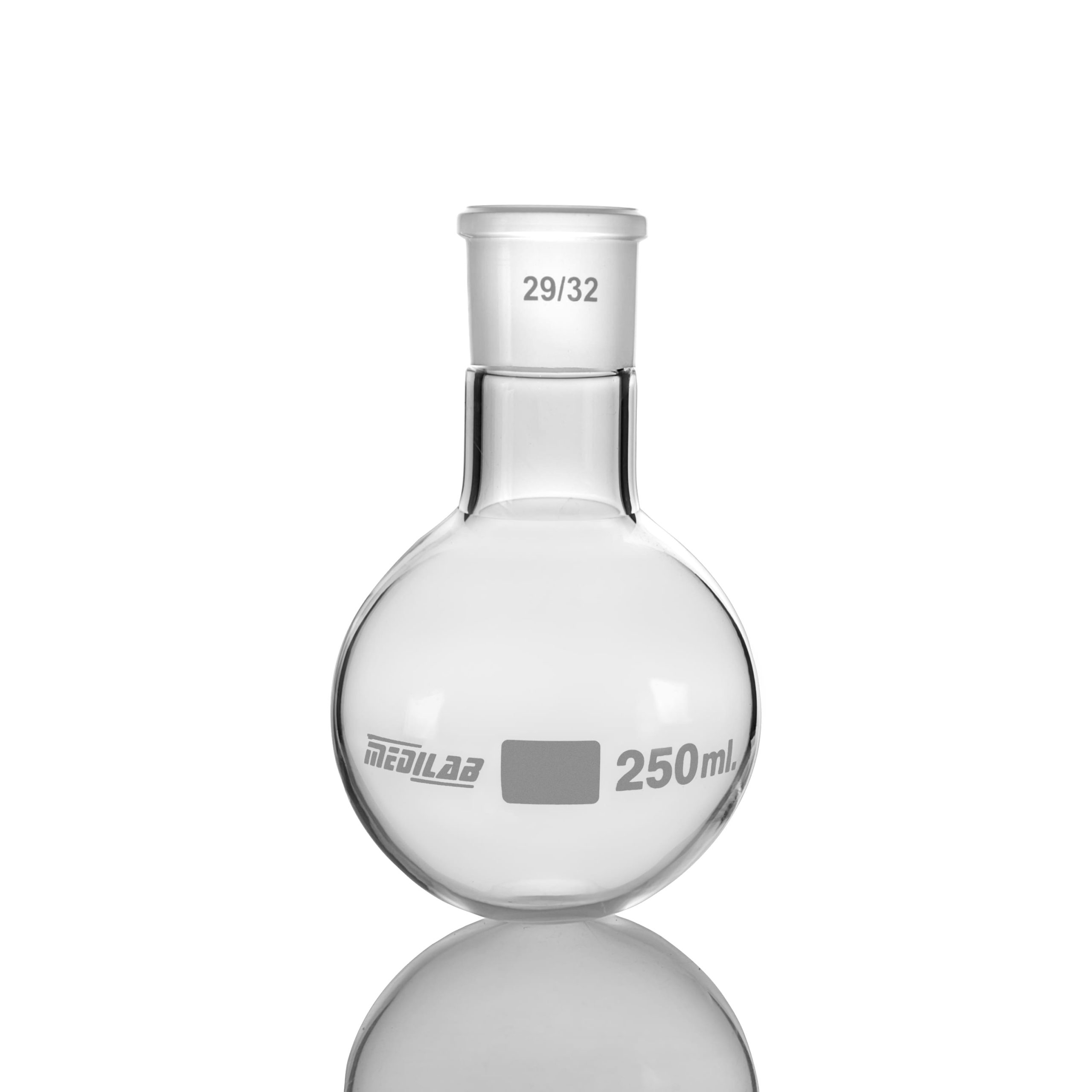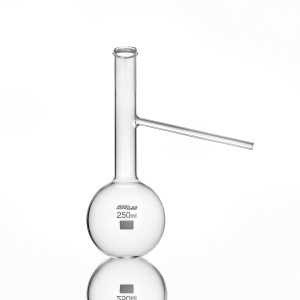Description
| Catalog No. | Nominal capacity ml | Socket size | Socket size | App. Overall Size | Dia. mm |
| 11143/1 | 50 | 14/23 | 14/23 | 85 | 51 |
| 11143/2 | 50 | 19/26 | 19/26 | 85 | 51 |
| 11143/3 | 50 | 24/29 | 24/29 | 85 | 51 |
| 11143/4 | 100 | 14/23 | 14/23 | 103 | 64 |
| 11143/5 | 100 | 19/26 | 19/26 | 103 | 64 |
| 11143/6 | 100 | 24/29 | 24/29 | 103 | 64 |
| 11143/7 | 250 | 24/29 | 24/29 | 130 | 85 |
| 11143/8 | 250 | 29/32 | 29/32 | 130 | 85 |
| 11143/9 | 250 | 34/35 | 34/35 | 130 | 85 |
| 11143/10 | 500 | 24/29 | 24/29 | 160 | 105 |
| 11143/11 | 500 | 29/32 | 29/32 | 160 | 105 |
| 11143/12 | 500 | 34/35 | 34/35 | 160 | 105 |
| 11143/13 | 1000 | 24/29 | 24/29 | 187 | 131 |
| 11143/14 | 1000 | 29/32 | 29/32 | 187 | 131 |
| 11143/15 | 1000 | 34/35 | 34/35 | 187 | 131 |
| 11143/16 | 2000 | 29/32 | 29/32 | 230 | 166 |
| 11143/17 | 2000 | 34/35 | 34/35 | 230 | 166 |
A Flask Round Flat Bottom Single Neck is a type of container used in scientific and chemical laboratories. It is typically made of borosilicate glass, a type of glass that is resistant to chemicals and high temperatures. The round bottom flask has a rounded bottom, which provides stability during the heating or mixing of liquids.
The joint is a cylindrical shape with a ground glass surface that is designed to fit into a matching socket. The ground glass surface provides a secure and airtight connection between the flask and other glassware components, such as condensers or adapters. This allows laboratory personnel to quickly and easily assemble and disassemble glassware components to perform a wide range of experiments and procedures.
Round bottom flasks with joints are commonly used for heating, mixing, and distillation of liquids, as well as for storage of liquids and chemicals. They typically have a wide opening at the top and may have a narrow neck or a stopper to control the flow of liquids. Some flasks may have markings on the side to indicate the volume or measurement of the contents.
It’s important to handle round bottom flasks with joints with care, as they can be easily damaged. They should be cleaned regularly to prevent contamination and corrosion. In addition, it’s important to use compatible glassware components and to avoid over-tightening the joint, which can cause damage to the joint or the glassware components.







